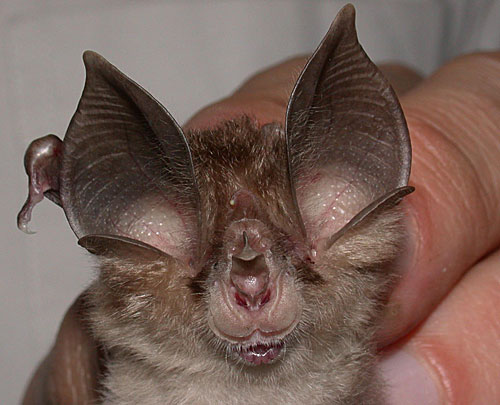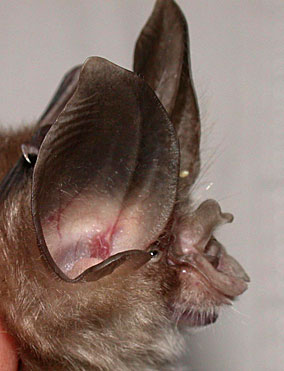Morphological description Life history Distribution Habitat Roost sites and roosting patterns Emergence and flight pattern Foraging behaviour Echolocation calls Status and protection
This taxon may be the small cryptic species of R. macrotis described by Sun et al. (2008).
Morphological Description
· Dorsal fur is light brown. Ventral fur is buffy.
· Forearm length 39.2 - 45.4 mm (n = 22), mass 5.5 - 6.4 g (n = 10). 22 bats could be readily assigned to this taxon, and there was no overlap with either forearm length or FMAXE of the larger R. macrotis.
· The horseshoe is wide, covering the muzzle and is distinctly notched in the middle. A secondary noseleaf is present, but this is often concealed by the horseshoe. The sella is long, rounded and broad. The connecting process is high. The lancet is long with convex lateral margins and a rounded tip. Essentially a small version of R. macrotis.
Life history
· Little known
Distribution
· We recorded bats from Fujian, Guangxi, Guizhou, Jiangxi, and Yunnan. R. siamensis appears to be widespread in southern China, and was recorded more frequently than R. macrotis, which may extend further northwards given our new record from Beijing. The two species were sympatric in Guangxi. R. siamensis was previously recorded from Yunnan according to Smith and Xie (2008).
Habitat
· Little known.
Roost sites and roosting behaviour
· Generally roosts in caves and mines. Usually found in small numbers.
· This species often shares cave roosts with other bat species.
Emergence and flight pattern
· Most rhinolophid bats have wing shapes that make them adept at foraging in cluttered environments.
Foraging behaviour
·Little known.
Echolocation calls
·Echolocation calls had frequency of most energy ranging from 60-69.3 kHz (n=22).there was no overlap with frequencies emitted by the larger R. macrotis.
Status and protection
· There is no estimation of population size in China.
· Thai horseshoe bats are LC in the China Species Red List. IUCN Global Status is LC.
· Caves and forests should be protected as important habitats.

